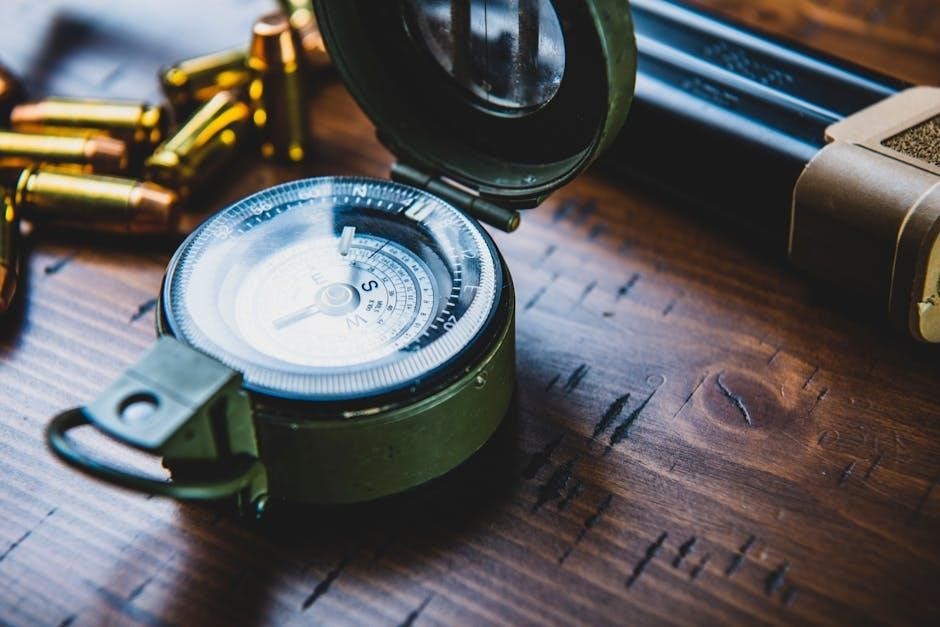Welcome to our Cataclysm Classic Leatherworking Guide, your ultimate resource for mastering the Leatherworking profession from level 1 to 525. This guide provides a detailed roadmap for crafting essential gear, understanding synergies with Skinning, and optimizing your crafting experience for classes like Rogues, Druids, and Shamans. Whether you’re a novice or an experienced crafter, this guide ensures you’ll craft efficiently, utilize materials wisely, and unlock the full potential of Leatherworking in Cataclysm Classic.
Overview of Leatherworking in Cataclysm Classic
Leatherworking is a primary profession in Cataclysm Classic that allows players to craft leather and mail armor, essential for classes like Rogues, Druids, Shamans, and Hunters. This profession is deeply synergistic with Skinning, enabling self-sufficiency in gathering materials. In Cataclysm, new materials like Savage Leather and Heavy Savage Leather were introduced, which are crucial for crafting high-level gear. Players can create armor, armor kits, and item enhancements, making Leatherworking a valuable profession for both PvE and PvP. With proper planning, crafters can efficiently level their skills, producing gear that enhances character performance and profitability through the Auction House.
Importance of Leatherworking for Crafting Gear
Leatherworking is vital for crafting essential gear for classes like Rogues, Druids, and Shamans, providing them with lightweight yet durable armor. This profession allows players to create leather and mail armor, which are crucial for agility-based characters. By crafting your own gear, you can ensure optimal stats for your playstyle, saving gold and enhancing performance. High-level recipes enable the creation of epic armor sets, PvP gear, and item enhancements, making Leatherworking a valuable asset for both PvE and PvP players. The ability to craft leg armor and other enhancements further boosts character efficiency, making this profession indispensable for those seeking to excel in Cataclysm Classic.
Synergy with Skinning Profession
Leatherworking pairs seamlessly with the Skinning profession, enabling players to gather raw materials like leather scraps and hides directly from skinned mobs. This synergy allows for self-sufficiency, as skinning provides the resources needed for crafting leather goods. By combining these professions, players can save gold and time, as they won’t need to rely on the Auction House for materials. This efficient pairing is particularly beneficial for crafting gear, as it ensures a steady supply of high-quality leather, making the leveling process smoother and more cost-effective. The ability to skin and craft in tandem is a cornerstone of mastering Leatherworking in Cataclysm Classic.
Leatherworking Trainers and Locations
Leatherworking trainers are found in major cities like Stormwind and Orgrimmar, offering training and recipe unlocks. They are easily accessible, allowing players to progress their crafting skills efficiently.
Finding Trainers in Major Cities
Leatherworking trainers are conveniently located in major cities like Stormwind, Orgrimmar, Ironforge, and Darnassus. In Stormwind, you’ll find the trainer near the Trade District, while in Orgrimmar, they are located in the Valley of Honor. These trainers provide essential training and recipe unlocks for players looking to progress their Leatherworking skills. Additionally, trainers can be found in other capital cities, ensuring accessibility for both Alliance and Horde players. Locating these trainers is straightforward, as they are typically near crafting hubs or in areas dedicated to professions. This convenience allows players to quickly access the training they need to advance their Leatherworking journey in Cataclysm Classic.
Unlocking Leatherworking Recipes
Unlocking Leatherworking recipes in Cataclysm Classic is essential for crafting high-quality gear and items. Many recipes are obtained from trainers as you level up your skill, while others can be purchased from vendors or found through drops. Some recipes require specific materials or skill levels to unlock, ensuring progression aligns with your crafting abilities. Additionally, crafting certain items can grant access to new recipes, promoting efficiency and mastery. The Auction House and crafting community also play roles in acquiring rare patterns. By strategically unlocking recipes, you can optimize your Leatherworking progression and craft essential items for your class or profit.

Leveling Leatherworking from 1-50 (Apprentice)
Begin your Leatherworking journey by crafting Light Leather (1-20), then Light Armor Kits (20-30), and finally Handstitched Leather Cloaks (30-50), using materials like Ruined Leather Scraps and Coarse Thread.
1-20: Crafting Light Leather
Begin your Leatherworking journey by crafting Light Leather, a foundational material for early gear. To reach level 20, craft 19 pieces of Light Leather, requiring 57 Ruined Leather Scraps. These scraps are commonly found while skinning beasts or purchased from the Auction House. This phase establishes your proficiency in working with basic leathers, essential for creating armor and accessories. The simplicity of this step allows new players to familiarize themselves with the crafting interface and material management. Keep in mind that pairing Leatherworking with Skinning ensures a steady supply of materials, making the process more efficient and cost-effective.
20-30: Creating Light Armor Kits
From level 20 to 30, focus on crafting Light Armor Kits, a straightforward recipe that enhances your Leatherworking skills. To create each kit, you’ll need 1 Light Leather, which you’ve likely already crafted in abundance during the previous phase. This step requires crafting 10 kits, making it a quick and efficient way to progress. The Light Armor Kit is a versatile item used for light armor repairs, making it a handy resource for early-game characters. This phase continues to build your foundation in working with leather materials while introducing you to crafting utility items that can be sold or used personally. Keep your materials organized to ensure a smooth progression through this stage.
30-50: Making Handstitched Leather Cloaks
From level 30 to 50, focus on crafting Handstitched Leather Cloaks, a recipe that further refines your Leatherworking skills. Each cloak requires 2 Light Leather and 1 Coarse Thread, with a total of 22 cloaks needed to reach level 50. This step is ideal for utilizing the abundance of Light Leather you’ve likely accumulated. The cloaks are simple to craft and serve as a practical item for low-level characters or a marketable commodity. This phase reinforces your proficiency in working with basic leathers and introduces you to crafting wearable armor pieces, a key aspect of Leatherworking. Ensure you stockpile enough materials to maintain a steady progression through this stage.

Leatherworking Leveling from 55-137
Leveling from 55 to 137 focuses on crafting Embossed Leather Gloves, Fine Leather Belts, and Cured Medium Hide. These recipes utilize Light Leather and Coarse Thread, optimizing material use and skill progression.
55-100: Embossed Leather Gloves
From level 55 to 100, focus on crafting Embossed Leather Gloves, a cost-effective recipe for steady skill progression. Each glove requires 1.5 Light Leather and Coarse Thread, making it an efficient way to gain skill points. To reach level 100, craft approximately 100 gloves, consuming 150 Light Leather and 100 Coarse Thread. This phase is ideal for players with ample Light Leather from skinning or Auction House purchases; The simplicity of this recipe ensures consistent progression without high material costs. This step is crucial for advancing toward higher-level recipes and specializations, making it a foundational part of your Leatherworking journey in Cataclysm Classic.
100-125: Fine Leather Belts
From level 100 to 125, crafting Fine Leather Belts is the most efficient method to advance your Leatherworking skill. Each belt requires 2.4 Light Leather and 0.8 Coarse Thread, with a total of 40 belts needed to reach level 125. This phase is ideal for players who have stockpiled Light Leather from skinning or Auction House purchases. The belt recipe is cost-effective and ensures steady skill progression. Additionally, crafting Fine Leather Belts prepares you for higher-level recipes like Cured Medium Hide and Dark Leather Belts. This step is crucial for maintaining material efficiency and advancing toward more complex crafting projects in Cataclysm Classic.
125-137: Cured Medium Hide
From level 125 to 137, focus on crafting Cured Medium Hide to continue advancing your Leatherworking skill. This recipe requires 1 Medium Hide per craft and is an efficient way to utilize any leftover or inexpensive hides. If you’ve been farming skins or purchasing from the Auction House, this phase helps maintain material efficiency. Crafting Cured Medium Hide not only progresses your skill but also prepares you for higher-level recipes like Dark Leather Belts. This step is a transitional phase, ensuring you’re ready for the heavier demands of later levels in Cataclysm Classic.

Advanced Leatherworking (150-225)
At this stage, you’ll craft Heavy Savage Leather and Dark Leather Belts, essential for high-level gear. These recipes enhance your skill progression and prepare you for mastering complex items.
150-200: Heavy Savage Leather
Crafting Heavy Savage Leather is a critical step in advancing your Leatherworking skill from 150 to 200. This material is essential for creating high-end armor pieces and enhancements. To craft Heavy Savage Leather, you’ll need Savage Leather, a resource obtained from skinning high-level mobs or purchasing from the Auction House. Each piece requires 8 Savage Leather and 24 Volatiles, such as Volatiles Earth. This phase focuses on mastering the use of rare materials and preparing for the final stages of Leatherworking. Efficient crafting here ensures a smooth progression to the next skill bracket and unlocks advanced recipes for epic gear.
200-225: Crafting Dark Leather Belts
Reaching the 200-225 skill bracket in Leatherworking involves crafting Dark Leather Belts, a key component for enhancing your gear. Each belt requires 8 Cured Medium Hide and 16 Volatiles, including Volatiles Earth, Air, Water, and Fire. This phase is crucial for mastering advanced crafting techniques and preparing for high-end recipes. Crafting Dark Leather Belts not only advances your skill but also provides essential items for character optimization. Ensure you stockpile materials efficiently, as this phase lays the groundwork for crafting epic gear and enhancements in later stages of your Leatherworking journey.

Mastering Leatherworking (225-300)
Mastering Leatherworking from 225 to 300 involves crafting advanced items like Thick Leather and Rugged Leather Armor, enhancing your gear and improving crafting efficiency significantly.
225-250: Thick Leather Crafting
Crafting Thick Leather from level 225 to 250 is a crucial step in mastering Leatherworking. This phase focuses on creating durable materials essential for high-level gear. You’ll need 100 Thick Leather and 20 Silken Thread to craft items that enhance your character’s equipment. This process is efficient for skill progression and prepares you for more complex recipes. Ensuring a steady supply of materials will keep your crafting momentum. Utilizing these materials ensures you can craft advanced armor and accessories, making this phase vital for both skill advancement and gear enhancement. Proper material management here sets you up for success in later stages.
250-300: Rugged Leather Armor
Reaching levels 250 to 300 in Leatherworking involves mastering Rugged Leather Armor, a key component for high-level gear. This phase requires crafting items like chestpieces and gloves, using 160 Rugged Leather, 20 Black Dye, and 20 Rune Thread. These recipes are essential for progressing your skill and equipping your character with durable armor. The materials needed are more advanced, reflecting the complexity of the gear. This stage is a milestone, as it transitions you toward mastery and prepares you for crafting elite-level items. Efficiently managing your resources here ensures a smooth progression through the final stages of Leatherworking in Cataclysm Classic.

Leatherworking Specializations
Reaching levels 250 to 300 in Leatherworking involves crafting Rugged Leather Armor, a high-end gear set. This phase requires 160 Rugged Leather, 20 Black Dye, and 20 Rune Thread. Recipes focus on creating durable armor pieces like chestpieces and gloves, essential for late-game content. The materials reflect the complexity of the gear, ensuring optimal performance for classes like Rogues and Druids. This stage is a critical milestone, transitioning you toward mastery and preparing you for elite-level crafting. Efficient resource management here is key to progressing seamlessly through the final stages of Leatherworking in Cataclysm Classic.
Choosing the Right Specialization
Selecting a Leatherworking specialization in Cataclysm Classic depends on your class and playstyle. Specializing in Mail or Leather offers unique benefits, such as improved crafting efficiency or exclusive recipes. For example, Rogues and Druids benefit more from Leather specialization, while Shamans and Hunters may prefer Mail. Consider your primary character’s needs and the gear they require. Additionally, evaluate material availability and Auction House demand to maximize profitability. Aligning your specialization with your progression goals ensures optimal results, whether crafting for personal use or selling on the Auction House. This choice enhances your crafting experience and tailors your profession to your in-game objectives.
Benefits of Specializing in Mail or Leather
Specializing in Mail or Leather in Cataclysm Classic offers distinct advantages for both crafting efficiency and character optimization. Mail specialization is ideal for classes like Shamans and Hunters, providing access to exclusive Mail armor recipes. On the other hand, Leather specialization is perfect for Rogues and Druids, enabling the creation of high-quality Leather armor. Both specializations reduce material costs for crafting and increase the market value of items. This focus also enhances your ability to craft gear tailored to your class, making it a strategic choice for both PvE and PvP players. Specializing ensures you maximize your profession’s potential and meet specific gear demands effectively.

Crafting Epic Gear in Cataclysm
Crafting epic gear in Cataclysm Classic allows Leatherworkers to create high-level armor sets and PvP gear, enhancing character performance and providing a competitive edge in both PvE and PvP.
Creating High-Level Armor Sets
Creating high-level armor sets in Cataclysm Classic involves crafting epic leather and mail armor using advanced materials like Savage Leather and Heavy Savage Leather. These armor sets are highly sought after by classes like Rogues, Druids, and Shamans for their superior stats and durability. Recipes for these sets often require additional materials such as Eternium Thread and Rune Thread, which can be purchased from vendors or crafted using other professions. Crafting these sets not only provides powerful gear but also enhances your character’s performance in both PvE and PvP scenarios. Plan your crafting sessions efficiently to maximize material usage and ensure optimal results.
Crafting PvP Gear
Crafting PvP gear in Cataclysm Classic allows Leatherworkers to create high-performance armor for competitive play; The introduction of item level 339 PvP sets makes Leatherworking a valuable profession for players seeking powerful gear. These sets require advanced materials such as Savage Leather and Heavy Savage Leather, which can be challenging to obtain in large quantities. Additionally, crafting PvP gear often involves using Eternium Thread and other rare components. The resulting armor pieces provide exceptional stats like stamina and resilience, making them ideal for battlegrounds and arenas. Crafting PvP gear also offers opportunities to profit by selling these items to other players via the Auction House, making it a rewarding endeavor for skilled Leatherworkers.

Using the Auction House Effectively
Mastering the Auction House is crucial for Leatherworking success in Cataclysm Classic. Buy materials like Light Leather and Coarse Thread at low prices and sell crafted gear for profit.
Buying Materials Efficiently
To craft effectively in Cataclysm Classic, buying materials efficiently is key. Focus on acquiring essential leathers like Light Leather, Medium Leather, and Heavy Leather at optimal prices. Use the Auction House to check daily prices and buy in bulk when materials are cheap. Prioritize Coarse Thread and Fine Thread for armor crafting. For higher levels, farm or purchase Savage Leather and Heavy Savage Leather strategically. Consider alternative materials like Cured Medium Hide if they are more cost-effective. Regularly monitoring the Auction House ensures you spend less gold and craft more efficiently, saving time and resources for progression.
Selling Crafted Items for Profit
Selling crafted items in Cataclysm Classic can be highly profitable if done strategically. Focus on crafting high-demand items like armor sets, belts, and gloves, which are popular among players. Use the Auction House to post your items at competitive prices, ensuring you undercut others to sell quickly. Timing is key—list items during peak hours when more players are active. Specialize in crafting rare or epic gear, such as PvP sets, to attract premium buyers. Additionally, craft and sell leg armor and item enhancements to maximize profits. By understanding market demand and pricing trends, you can turn your Leatherworking skills into a gold-making venture.

Leatherworking Enhancements
Leatherworking enhancements in Cataclysm Classic allow for improved gear customization. Craft leg armor to boost stamina and agility, while item enhancements provide additional stats for optimal performance.
Leg Armor and Its Importance
Leg armor crafted through Leatherworking in Cataclysm Classic significantly enhances character performance. Using materials like Heavy Savage Leather and Eternium Thread, leg armor provides substantial stamina and agility boosts. These enhancements are particularly beneficial for classes like Rogues and Druids, improving survivability and mobility. Crafting leg armor also allows players to customize gear according to their playstyle, ensuring optimal performance in both PvP and PvE scenarios. The ability to craft leg armor highlights the versatility of Leatherworking, making it a valuable profession for players seeking to maximize their character’s potential without relying on drops or purchases.
Item Enhancements for Optimal Gear
In Cataclysm Classic, Leatherworking allows for crafting item enhancements that significantly improve gear performance. These enhancements include armor kits and leg armors, which boost stats like stamina, agility, and spell power. Using materials such as Heavy Savage Leather and Eternium Thread, players can craft gear that offers enhanced durability and combat effectiveness. These enhancements are particularly valuable for classes relying on leather or mail armor, ensuring optimal performance in both PvE and PvP scenarios. By incorporating these upgrades, players can tailor their gear to specific playstyles, making Leatherworking a crucial profession for those seeking to maximize their character’s potential.

Leatherworking Profession Bonuses
Leatherworking offers unique bonuses, such as crafting your own gear and efficient material usage, making it a valuable profession for self-sufficiency and optimizing character performance in Cataclysm Classic.
Benefits of Crafting Your Own Gear
Crafting your own gear in Cataclysm Classic Leatherworking offers numerous advantages. It ensures you have control over the quality and stats of your equipment, allowing you to tailor items to your character’s specific needs. This eliminates the reliance on drops or costly marketplace purchases, saving gold and time. Additionally, crafting your own gear enables you to experiment with different combinations of materials, enhancing your character’s performance in PvE and PvP scenarios. Leatherworkers can also craft armor for other classes, making it a valuable profession for both personal use and supporting guildmates or alts. This self-sufficiency is a key benefit of mastering Leatherworking.
Efficiency in Material Usage
Efficiency in material usage is crucial for successful Leatherworking in Cataclysm Classic. By crafting lower-level items first, you utilize basic materials like Light Leather and Coarse Thread effectively, reducing waste. This approach ensures you progress through skill levels without excessive material costs. Additionally, planning your crafting schedule allows you to allocate resources wisely, especially when farming or purchasing hides. Efficient material usage not only saves gold but also enables you to craft high-level items without delays. This strategic approach is essential for mastering Leatherworking and creating epic gear for yourself or profitable items for the Auction House.
Mastering Leatherworking in Cataclysm Classic requires patience, efficient material usage, and strategic crafting. Always utilize the Auction House for cost-effective materials and stay updated on market trends to maximize profits. With dedication and practice, you’ll become a skilled crafter, capable of creating epic gear and enhancements for yourself and others. Happy crafting!
Summarizing the Leatherworking Journey
Your Leatherworking journey in Cataclysm Classic begins at level 1 and progresses through 525, with each phase introducing new recipes and materials; Starting with basic light leathers, you’ll craft essential items like armor kits and cloaks before advancing to more complex gear. The expansion introduces Savage Leather and its derivatives, which are crucial for high-level crafting. As you progress, you’ll unlock the ability to create epic armor sets, PvP gear, and item enhancements. The synergy with Skinning ensures self-sufficiency, while the Auction House provides flexibility in material acquisition. By mastering Leatherworking, you’ll not only enhance your own gear but also craft items for others, making it a rewarding and versatile profession.
Final Tips for Mastery
To master Leatherworking in Cataclysm Classic, focus on efficient leveling by using the best recipes for each skill range. Always plan ahead, as higher-level crafts often require materials from earlier stages. Utilize the Auction House wisely to buy materials at optimal prices and sell crafted items for profit. Pairing Leatherworking with Skinning ensures self-sufficiency, reducing reliance on the market. Experiment with specializations like Mail or Leather to cater to your playstyle or market demand. Finally, continuously craft and refine your skills, as practice is key to mastering this versatile profession and unlocking its full potential in Cataclysm Classic.